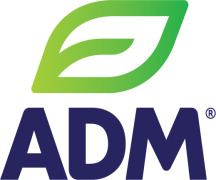News
What does the future hold for fat replacement?
10 Jul 2019The heyday of low fat diets is in the past amid increased awareness of the positive role that healthy fats can play in a balanced diet – but there is still strong demand for low fat foods, and fat replacement remains a major target for food companies.
The focus for food manufacturers has shifted when it comes to fat, away from the low fat trend of the 1980s and 1990s, toward reducing saturated fat and cutting out partially hydrogenated oils, often replacing these ingredients with healthier fats rather than trying to remove fat completely. Many packaged food brands have started playing up the flavours and nutritional properties of different fats and oils, such as those from coconut, olive, sunflower and avocado. However, fat is still a high calorie macronutrient – with nine calories per gram compared to four calories per gram for carbohydrates and protein – and with high obesity rates, many consumers are looking for ways to reduce their caloric intake.

Back in the late 1990s, Proctor & Gamble’s Olestra ingredient appeared to be the ultimate solution for fat replacement, as it prevented the absorption of fat in the gut. Manufacturers used it in major brands like Pringles and Frito-Lay crisps. However, it emerged that Olestra also caused gastrointestinal distress and prevented the absorption of vital nutrients, and sales took a nosedive after peaking at $400 million in 1998.
Now a company called Epogee Foods has released a fat replacement ingredient that it claims can cut calories by 92% without affecting texture, taste or appearance in a wide range of foods. The product is made from rapeseed oil, which is restructured so very little of it is absorbed by the body, and it retains the functional properties of oil. Despite obvious similarities, the company is keen to avoid comparisons with Olestra, saying its ingredient does not inhibit vitamin absorption, for example. The US Food and Drug Administration has already granted it generally recognised as safe (GRAS) status, but it is not yet approved in Europe. And the ingredient also clashes with the clean label trend, as it would have to be listed as "esterified propoxylated glycerol" – perhaps a hard sell among consumers looking for simpler ingredient lists.
Meanwhile, oil producers have been working to improve the nutritional composition of their oils to meet growing demand for healthier fats, while also improving functionality. Companies like Bunge, Brenntag and ADM, for example, provide a range of high oleic oils from soybeans, corn, canola, sunflower and safflower that are higher in monounsaturated fats than other varieties. These oils may not cut calories, but they do allow manufacturers to slash saturated fat – and they are useful for fried and baked goods as they have better heat stability and are less prone to oxidation than traditional vegetable oils. More recently, Cargill released a high oleic canola oil in January 2018, and claims it can cut the saturated fat content in finished products by 35% compared to ordinary canola oil.
If Epogee can get past its regulatory and labelling challenges, its fat replacer could allow calorie-counting consumers – and manufacturers – to have their cake and eat it. But whether there is sufficient appetite for such an ingredient in Europe is debatable, especially against the backdrop of growing interest in oils and fats and their place in a healthy diet, and rising demand for natural full-fat products, such as milk and dairy.


-comp248703.jpg)

